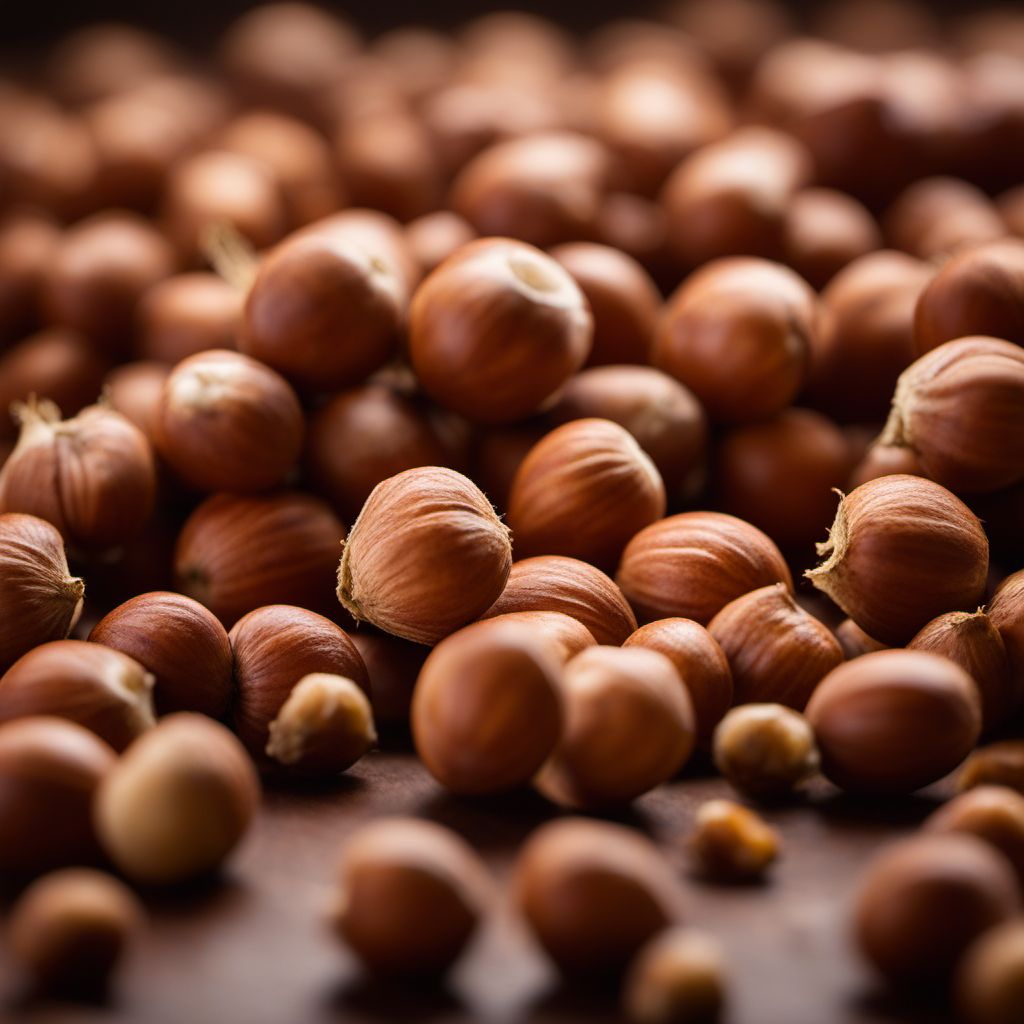
Ingredient
Hazelnuts and similar-
The Nutty Delights
Hazelnuts and similar ingredients are small, round nuts with a hard outer shell and a creamy, buttery texture. They have a distinct, sweet, and nutty flavor that intensifies when roasted. These ingredients are commonly used in baking, confectionery, and as a topping for salads or roasted vegetables.
Origins and history
Hazelnuts have been cultivated for centuries and are native to regions of Europe and Asia. They have a long history of culinary use, dating back to ancient times. Hazelnuts are particularly popular in Italian and Turkish cuisines, where they are used in various traditional dishes and desserts. They are also an important ingredient in the production of chocolate and pralines.
Nutritional information
Hazelnuts and similar ingredients are a good source of healthy fats, fiber, vitamin E, and minerals such as magnesium and copper. They are also relatively high in calories, so portion control is important. A 1-ounce (28g) serving of hazelnuts provides approximately 176 calories.
Allergens
Hazelnuts and similar ingredients may cause allergic reactions in individuals with nut allergies. It is important to read food labels carefully and avoid consumption if allergic.
How to select
When selecting hazelnuts and similar ingredients, look for ones that are plump, firm, and free from cracks or holes. Shake the nuts to ensure they do not rattle, as this may indicate they are stale. Additionally, choose ones with a golden-brown color, as this indicates they are fresh and flavorful.
Storage recommendations
To maintain the freshness and quality of hazelnuts and similar ingredients, store them in an airtight container in a cool, dry place, such as the refrigerator or pantry. Proper storage helps prevent the nuts from becoming rancid or losing their flavor.
How to produce
Hazelnuts and similar ingredients can be grown in home gardens, provided the climate is suitable. They require well-drained soil, full sun exposure, and regular watering. It takes several years for hazelnut trees to mature and produce a significant harvest.
Preparation tips
To prepare hazelnuts, start by removing the outer shell. This can be done by cracking the shell with a nutcracker or applying gentle pressure with a rolling pin. Once the shells are removed, the nuts can be used whole, chopped, or ground. Roasting hazelnuts enhances their flavor and can be done by spreading them on a baking sheet and toasting in the oven at 350°F (175°C) for approximately 10-15 minutes, or until golden brown. Hazelnuts are commonly used in baking, desserts, spreads, and as a topping for salads or roasted vegetables.
Substitutions
Almonds can be used as a substitute for hazelnuts in most recipes, as they have a similar texture and flavor. However, keep in mind that almonds have a slightly different taste profile, so the final result may vary slightly. Other suitable substitutes include walnuts, pecans, or macadamia nuts, depending on the specific recipe.
Culinary uses
Hazelnuts and similar ingredients are widely used in baking, confectionery, and desserts. They can be incorporated into cookies, cakes, pastries, chocolates, and spreads such as Nutella. Additionally, they add a delightful crunch and nutty flavor to salads, roasted vegetables, and grain dishes. They are a staple ingredient in Italian cuisine, where they are used in dishes like pesto, biscotti, and gelato.
Availability
Hazelnuts and similar ingredients are commonly available in regions where they are cultivated, such as Europe, Asia, and North America. They can be found in grocery stores, supermarkets, and specialty food stores. They are also available online for purchase and delivery.


